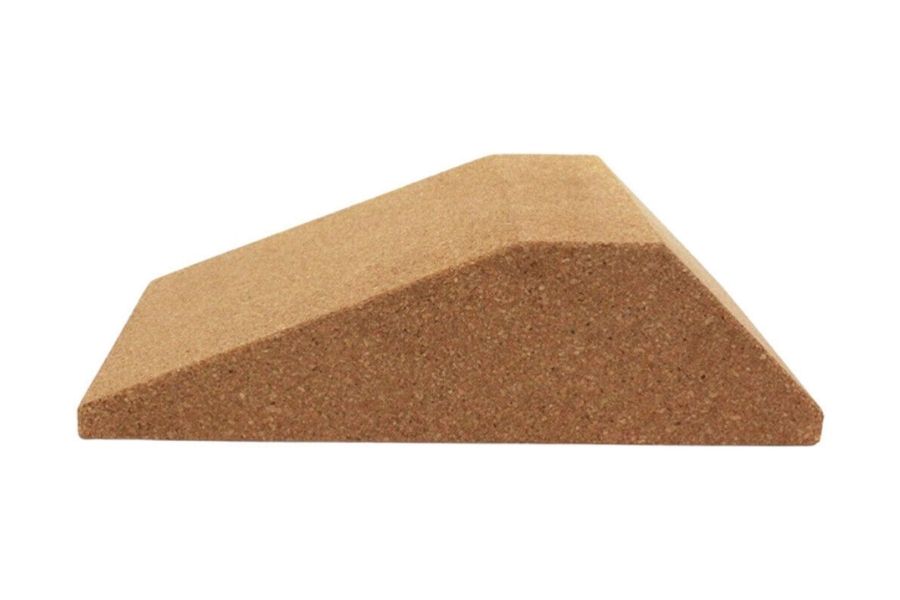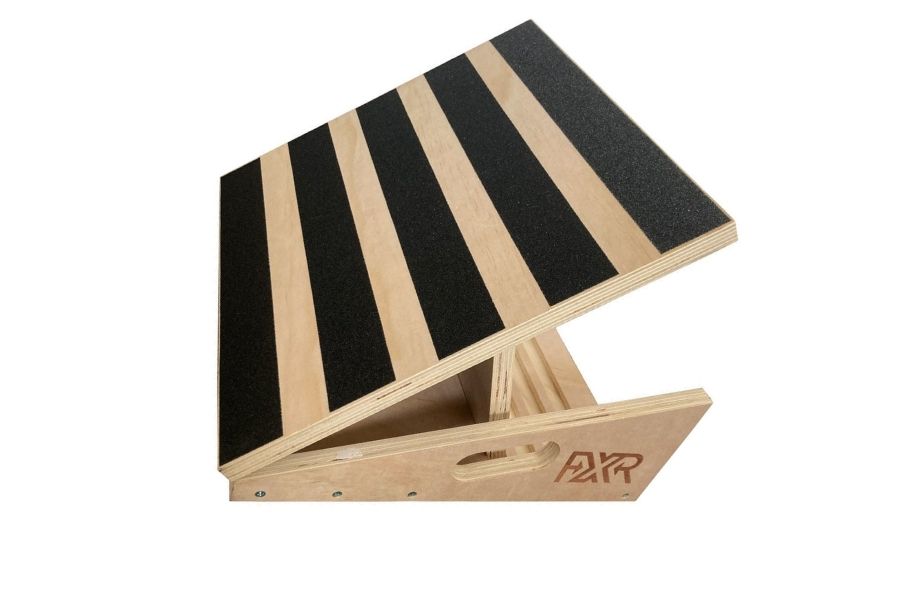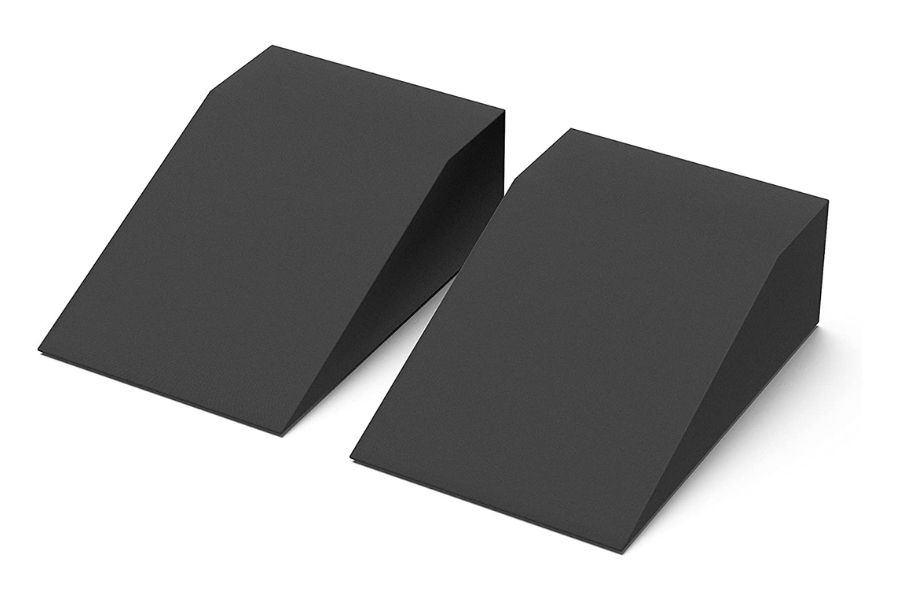Best slant boards to help improve balance and boost performance
Slant boards offer a simple yet highly effective way to target specific muscle groups, improve balance and enhance overall performance

In the world of performance, balance and flexibility are crucial but often-neglected qualities. Slant boards can help reduce risk of injury and aid rehabilitation, improve your technique and make you more adaptable to various terrains or movement patterns.
Slant boards work by creating an inclined surface, elevating one end of the foot or both feet. This incline engages various muscles in the lower body, including the calves, quads and glutes, while simultaneously challenging balance and proprioception.
The slanted position of your feet can help to activate and strengthen the key muscles used while running or cycling.
Many athletes have also found the slant board to be a helpful tool for aiding with prevention and rehab for the Achilles, which is notorious for serious injuries.
Below, we explore some of the top slant board options available on the market, examining their features and benefits, so you can make an informed decision about which slant board is right for you.
Best slant boards to buy right now
StrongTek Wooden Slant Board

This slant board from StrongTek is made from plywood, which the brand says provides strong, long-lasting build quality. It’s able to support a max weight of 204kg, which may attest to good build quality.
The board has five different, adjustable angles to choose from based on your requirements. The angles can be adjusted using what StrongTrek calls its ‘quick-adjust locking system’, which involves lifting the step between rungs and setting it in place.
It also features cut-out side handles to make it easier to carry and anti-slip treads for your feet. The same tread is applied under the board to help keep it locked in place while in use.
Dimensions: 41.9 x 33.5 x 15.5cm
Incline options: 15°, 20°, 25°, 30° and 35°
Max weight capacity: 204kg
Yoyonstore Slant Board

This affordable slant board is made from cork, which aims to provide grip while remaining lightweight and portable.
It comes in two separate boards, designed to allow users to choose the width and angles of their practice, meaning they can turn the feet slightly inside or out to activate different muscles and tendons.
Dimensions: 23 x 12 x 6.6 cm (per board)
Incline options: None
Weight capacity: Not listed
FXR Sports Wooden Slant Board

FXR Sports’ wooden incline slant board features five adjustable levels of incline, using rungs to fix the wooden board in place.
The face of the slant board features strips of a synthetic material for added grip. FXR claims the plywood used provides a sturdy and stable base, allowing users to practice with confidence.
Dimensions: 37 x 40 x 15cm
Incline options: Five (degrees unlisted)
Weight capacity: 150kg
StrongTek Yoga Foam Wedge Blocks

Another option from yoga and physical therapy specialists StrongTek, this pair of yoga wedge blocks aim to unlock a variety of positions and stretching angles.
They’re made from a foam cushioning material, which is said to be soft but also offer support to relieve pressure on the user’s joints.
The design is said to be well balanced, with a curved surface to test flexibility and stability. The blocks are also designed to be versatile for a range of other exercises, such as push-ups and squats.
StrongTek say the foam is heavy-duty and sweat resistant. They come with a portable carry bag, allowing you to transport them to the gym or park with ease.
Dimensions: 30 x 15.2 x 7.6 centimetres
Incline options: 24°
Weight capacity: Not listed
66fit Multi Adjustable Stretch Board

66fit’s adjustable slant board aims to provide as wide a range as possible to ensure users can reach a deep stretch and fully test their balance.
It features up to six degrees of adjustment, ranging from 15 to 39-degree angles. It comes with two ridged boards to help with foot placement and prevent user’s feet from slipping.
There’s a manual with instructional graphics to guide you through a range of exercises.
Dimensions: 40.64 x 32 x 13.46 cm
Incline options: 15°, 18°, 20°, 24°, 30° and 39°
Weight capacity: Unlisted
Aifusi Slant Board

Aifusi’s slant board is made from ABS plastic with a stainless-steel stand, which locks the board in place. The brand claims this construction is sturdy and durable.
The board itself features an anti-slip textured surface with a lip to keep your heels symmetrical and locked-in. There are five different adjustable slants to choose from, from completely flat to 45 degrees.
Dimensions: 12.71 inches x 11.14 inches x 3.54 inches
Incline options: 0°, 20°, 30°, 40° and 45°
Weight capacity: 150kg
Why use a slant board?
Using a slant board can help to prevent injuries and aid rehabilitation. They’re particularly popular with athletes suffering from Achilles injuries or plantar fasciitis flare ups.
Incorporating a slant board can also help you target specific muscle groups, improve balance, enhance flexibility and add a touch of versatility to your training.
What should you look for in a slant board?
- Adjustable incline: Adjustable incline levels allow you to customise the angle of the board to suit your specific training needs and goals. Beginners may prefer a lower incline to start, while more advanced athletes can gradually increase the incline for added depth and intensity.
- Construction: Ensure that the slant board is made from durable materials that can withstand the demands of your training sessions. Look for a solid and stable construction that can support your weight and provide a secure platform for various exercises.
- Anti-slip features: Rubberised grips or textured surfaces can be beneficial for maintaining stability during workouts.
- Weight capacity: Check the weight capacity of the slant board to ensure it can safely accommodate your body weight and any additional equipment you might use during training. A higher weight capacity may also signify better build quality.
What materials should I look for?
The main materials slant boards will be made from are cork, foam and wood. Each has various pros and cons, so it’s important to consider which is right for you.
Cork’s elasticity and grip can provide a supportive non-slip surface, ensuring your feet stay securely in place during exercises, even while wet. However, cork can absorb moisture, which can make it smell or crumble over time.
Foam provides comfort and support during workouts, reducing pressure on your feet and other contact points. It can get dirty easily, though, as well as wearing quickly, so it may not be the most durable option.
Some types of disposable foam may also not be sustainable, so it’s good to check the manufacturer’s description.
Wood can withstand the demands of intense training sessions, ensuring the longevity of your slant board.
Its aesthetics are also a bonus, able to add some elegance to your training space. However, wood can be more expensive and may become slippery with sweat.
This issue can be circumvented by choosing a wooden option with a non-slip surface, either through textured wood grain or the application of grip-enhancing materials.



